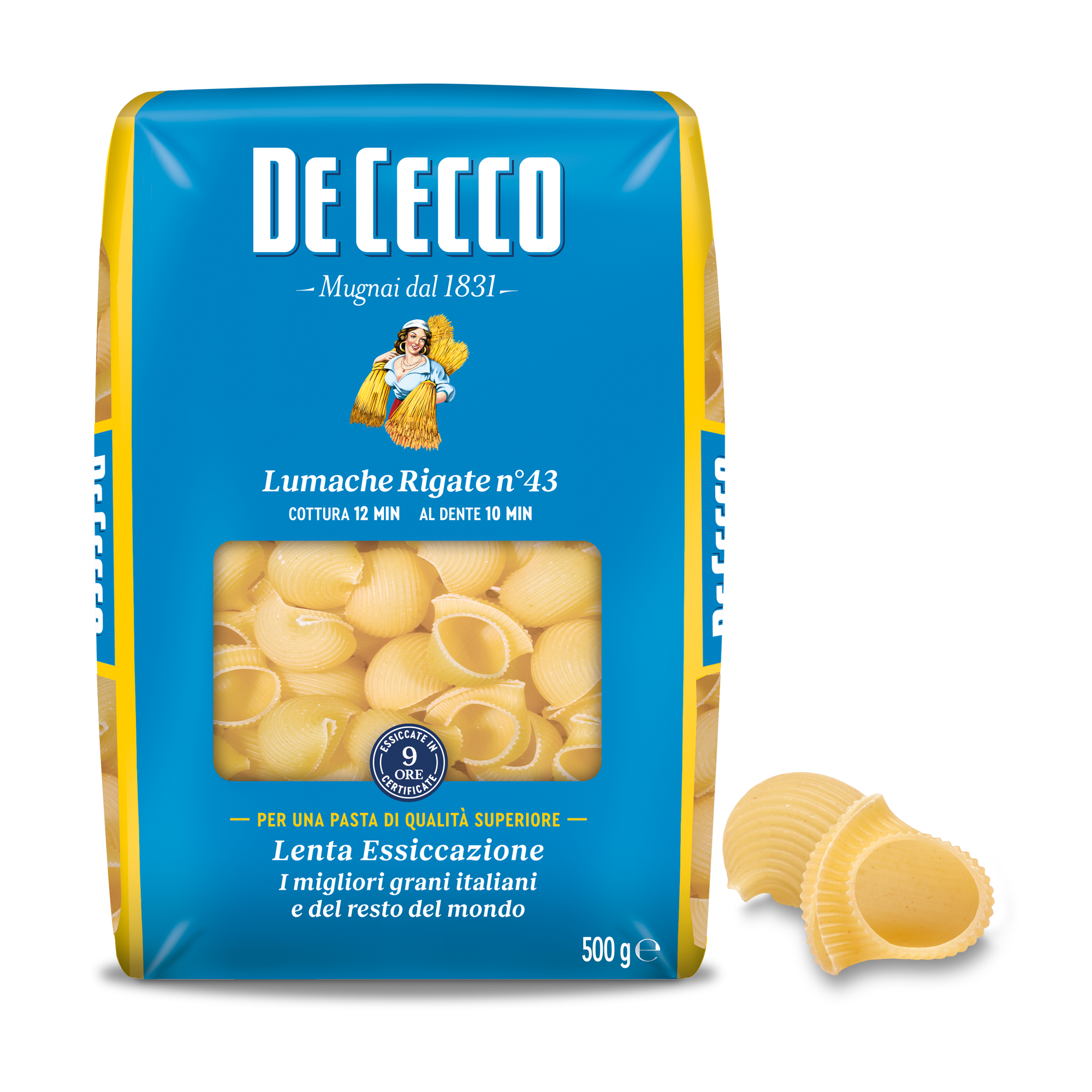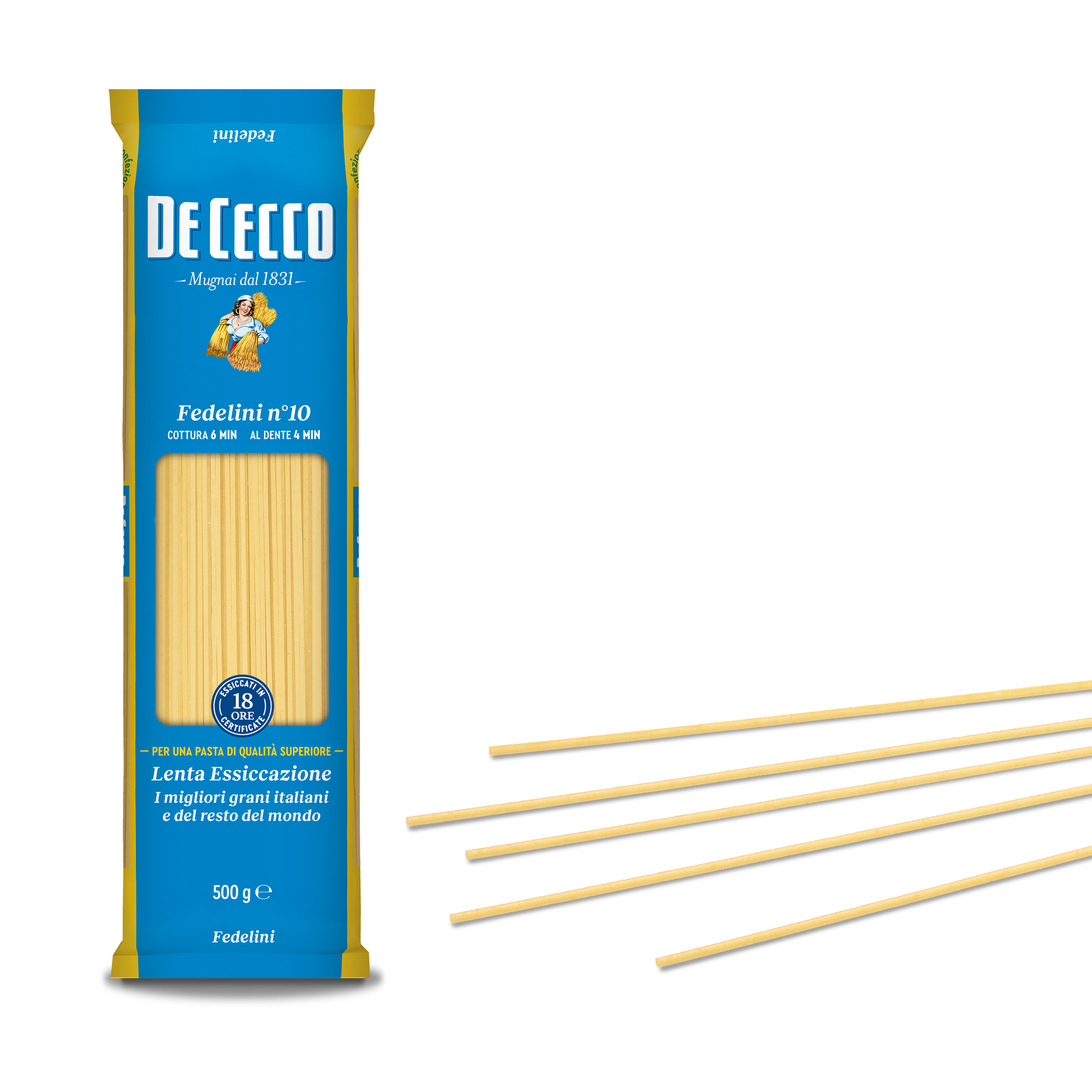Lumache Rigate n° 43
Pasta shapes that resemble small animals found in the garden or in fields are not uncommon.
Some people claim that Lumache (snails) can be traced back to the times of Roman cooking while others maintain that this type of pasta originated more generically from the central-southern part of Italy.
Lumache Rigate (grooved snails) are a delicious variation of the classic Pipe and have a whimsical shape which, thanks to the double-ended opening and the distinctive ridges, is perfect for mixing up with and capturing less dense, more liquid sauces.
Lumache Rigate are especially good with ragù sauces made from pork or beef, sausages or mushrooms. This pasta is also perfect for summer dishes with light sauces made from fresh tomatoes and mozzarella, or oven-baked dishes.
Available in 500g pack.s
- Cooking time: 12 min - Al dente: 10 min

Our method
Fedelini n° 10





